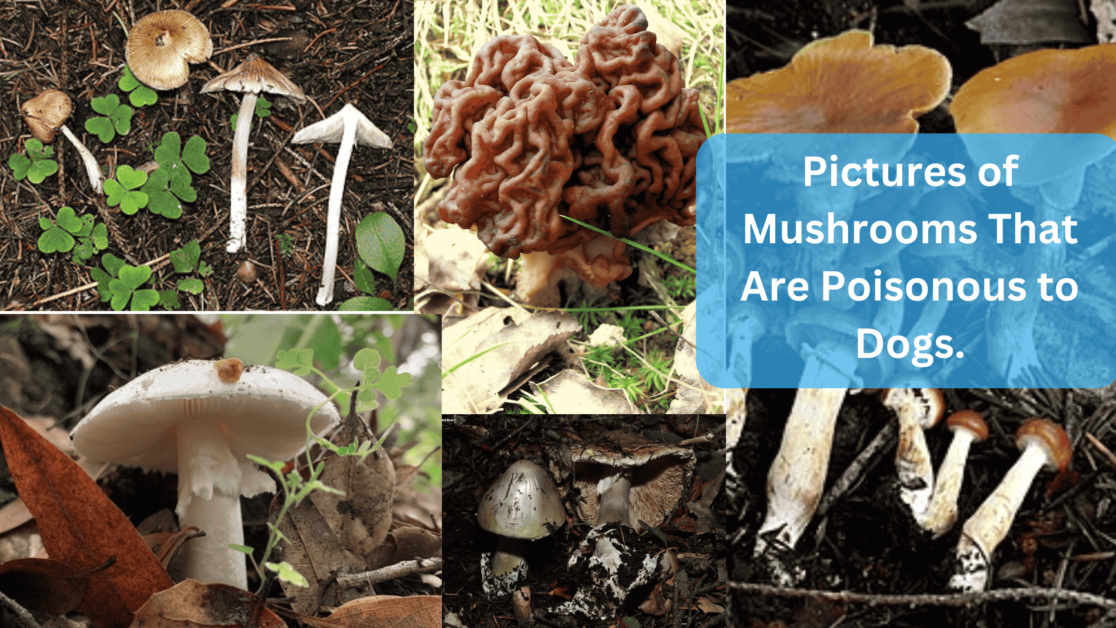Fish Flakes for Dogs: Are you considering adding fish flakes to your dog’s diet? Fish flakes, traditionally used as a food source for Fish, have gained popularity as a dietary supplement for dogs.
These flakes are packed with essential nutrients and potential health benefits for our furry friends.
In this article, we’ll explore the world of fish flakes for dogs, delving into their advantages, safety considerations, and how to incorporate fish flakes into your dog’s diet.
By the end, you’ll better understand whether fish flakes are a suitable addition to your dog’s nutritional regimen.
So, let’s dive in and uncover the secrets of fish flakes for dogs!
What are Fish Flakes?

Fish flakes are a food commonly used in the aquarium industry as a dietary staple for Fish.
These flakes are made from various types of Fish, including salmon, tuna, or whitefish, which are carefully processed and dried to create thin, lightweight flakes.
While fish flakes are primarily designed for fish consumption, many pet owners have started exploring their potential benefits for dogs.
Fish flakes are rich in essential nutrients, including omega-3 fatty acids, protein, vitamins, and minerals.
These nutrients are crucial for maintaining a dog’s overall health and well-being.
When properly incorporated into a dog’s diet, fish flakes can boost nutritional goodness that supports their immune system, promotes healthy skin and coat, and contributes to optimal growth and development.
However, it’s important to note that not all fish flakes are suitable for dogs. Some commercially available fish flakes may contain additives or preservatives that can harm dogs.
Therefore, selecting fish flakes specifically formulated for canine consumption is crucial or consulting with a veterinarian to ensure you choose the right product for your furry friend.
In the following sections, we’ll delve deeper into the safety considerations, health benefits, and proper usage of fish flakes for dogs, helping you make an informed decision about incorporating this supplement into your dog’s diet.
Health Benefits of Fish Flakes for Dogs

Fish flakes offer a wide range of health benefits for dogs, thanks to their nutrient-rich composition. Here are some of the key advantages of incorporating fish flakes into your dog’s diet:
1. High Protein Content
Fish flakes are an excellent source of high-quality protein essential for muscle development, repair, and overall growth.
Protein is particularly important for active dogs or those recovering from illness or injury.
2. Essential Fatty Acids
Fish flakes are rich in omega-3 fatty acids, including EPA (eicosapentaenoic acid) and DHA (docosahexaenoic acid).
These fatty acids promote healthy skin and coat, reduce inflammation, support brain function, and boost cardiovascular health.
3. Vitamins and Minerals
Fish flakes contain various vitamins and minerals contributing to a dog’s well-being.
These include vitamin D, B12, selenium, iodine, and magnesium, which are vital for maintaining healthy bones, teeth, and immune function.
4. Healthy Coat
The omega-3 fatty acids in fish flakes help nourish the skin and coat, promoting a glossy, lustrous appearance.
They can alleviate dryness, itchiness, and irritation, making fish flakes a great option for dogs with skin conditions or allergies.
5. Joint Health
The anti-inflammatory properties of omega-3 fatty acids in fish flakes can benefit dogs with joint issues, such as arthritis.
These fatty acids help reduce joint inflammation, alleviate pain, and improve mobility.
6. Boosted Immune System
The nutrients in fish flakes, including vitamins and antioxidants, support a strong immune system in dogs.
A robust immune system helps protect against infections, diseases, and other health challenges.
It’s important to note that while fish flakes offer many health benefits, they should be used to supplement a balanced and complete diet.
Always consult your veterinarian before introducing fish flakes or any new dietary changes to ensure they are appropriate for your dog’s needs.
In the next sections, we’ll explore the proper usage and considerations when incorporating fish flakes into your dog’s diet, helping you provide the best nutrition for your furry friend.
Also Read: Can Dogs Eat Yellow Rice? Unveiling the Truth & Benefits
Safety Considerations for feeding fish flakes to dogs
While fish flakes can offer numerous health benefits for dogs, it’s crucial to consider certain safety aspects before incorporating them into your furry friend’s diet. Here are some key points to keep in mind:
1. Allergies and Sensitivities
Like humans, dogs can have allergies or sensitivities to certain types of Fish.
Before introducing fish flakes, observe your dog for any signs of adverse reactions such as itching, vomiting, diarrhea, or skin irritations.
If you suspect an allergy or sensitivity, consult with your veterinarian for guidance and consider alternative protein sources.
2. Selecting High-Quality Fish Flakes
When choosing fish flakes for your dog, choose those specifically formulated for canine consumption.
These products are usually free from additives, preservatives, and harmful ingredients that may be present in fish flakes intended for other animals.
Look for reputable brands that prioritize the quality and sourcing of their ingredients.
3. Moderation and Portion Control
While fish flakes can be beneficial, they should be incorporated into your dog’s diet in moderation.
Too much Fish can lead to an imbalance in nutrients, particularly fatty acids.
Follow the recommended guidelines the manufacturer provides or consult with your veterinarian to determine the appropriate portion size based on your dog’s Size, age, and specific nutritional needs.
4. Cooked vs. Raw Fish
It’s important to note that fish flakes are typically made from cooked and processed Fish.
Raw Fish, on the other hand, may carry potential risks such as parasites or bacterial contamination.
Avoid feeding raw Fish to your dog, as it can pose health hazards.
Stick to commercially available fish flakes that have undergone proper processing and quality control.
5. Introduce Gradually
If you’re introducing fish flakes to your dog’s diet for the first time, it’s advisable to do so gradually.
Start with a small amount mixed into their regular food and monitor their response. Slowly increase the quantity over time while watching for any adverse reactions.
Remember, every dog is unique, and what works well for one may not work for another.
If you have any concerns or questions regarding feeding your dog fish flakes, consult your veterinarian for personalized advice based on your dog’s specific needs and health conditions.
By considering these safety considerations and making informed decisions, you can confidently provide the potential benefits of fish flakes to your canine companion while ensuring their safety and well-being.
Introducing Fish Flakes to Your Dog’s Diet

If you’ve decided to incorporate fish flakes into your dog’s diet, it’s essential to introduce them gradually and thoughtfully. Here are some tips to ensure a smooth transition:
1. Start Slowly
Add a small amount of fish flakes to your dog’s regular meals.
This allows their digestive system to adjust and reduces the chances of any digestive upset.
Gradually increase the number of fish flakes over several days or weeks, depending on your dog’s tolerance and response.
2. Mixing with Meals
Fish flakes can be easily mixed into your dog’s existing food.
Whether you feed them commercial dog food or homemade meals, sprinkle the desired amount of fish flakes over the food and gently mix it in.
This helps to distribute the flavor and aroma of the fish flakes throughout the meal.
3. Homemade Meals
Fish flakes can be nutritious if you prepare homemade meals for your dog.
Incorporate them into recipes with other dog-friendly ingredients such as lean meats, vegetables, and grains.
Ensure that the overall meal is nutritionally balanced, and consult with a veterinarian or canine nutritionist to ensure your dog’s specific dietary needs are met.
4. Commercial Dog Food
Many commercial dog food brands offer options that include Fish as a primary ingredient.
If you prefer the convenience of commercial dog food, look for high-quality options that list Fish as a main protein source.
Read the product labels carefully to ensure that fish flakes or fish meals are listed among the ingredients.
5. Veterinary Consultation
Before making any significant changes to your dog’s diet, it’s always wise to consult with your veterinarian.
They can provide personalized guidance based on your dog’s individual health needs, dietary restrictions, and any existing medical conditions.
They may also recommend specific brands or types of fish flakes that are suitable for your dog.
Remember, a gradual and balanced approach is key when introducing new food to your dog’s diet.
Monitor your dog’s response to the fish flakes, including their digestion, coat condition, and overall well-being.
Consult your veterinarian for further evaluation and guidance if you notice any negative reactions or concerns.
By following these steps and collaborating with your veterinarian, you can safely and effectively incorporate fish flakes into your dog’s diet, providing them with potential health benefits and a delicious addition to their meals.
Proper Usage of fish flakes and Serving Suggestions for dogs
When it comes to using fish flakes as a dietary supplement for your dog, here are some tips to ensure proper usage and make it an enjoyable experience:
1. Serving Size
The appropriate serving size of fish flakes depends on factors such as your dog’s Size, age, and nutritional needs.
As a general guideline, start with a small amount and adjust accordingly.
Larger dogs may require a slightly larger serving, while smaller dogs may need a more modest portion.
It’s always best to consult your veterinarian to determine your dog’s ideal serving size.
2. Mixing with Food
One of the simplest ways to serve fish flakes is by mixing them with your dog’s regular food.
Sprinkle the desired fish flakes over their meal and gently mix them in.
This allows the flavors and aromas of the fish flakes to blend with the food, making it more enticing for your dog.
3. Training Treats
Fish flakes can also be used as a tasty and nutritious training treat.
During training sessions, break them into smaller pieces or crush them into a powder-like consistency.
This provides a delicious reward for your dog and adds a healthy element to their training routine.
4. Homemade Dog Treats
Get creative in the kitchen by incorporating fish flakes into homemade dog treats. There are numerous recipes available that include Fish as an ingredient.
From fish-flavored biscuits to savory Fish jerky, these treats can be a fun and nutritious way to add variety to your dog’s snack time.
5. Proper Storage
To maintain the freshness and nutritional value of fish flakes, storing them properly is important. Keep them in an airtight container in a cool, dry place away from direct sunlight.
This helps prevent moisture and exposure to air, which can degrade the quality of the flakes. Always check the expiration date and discard any expired or rancid fish flakes.
Remember to monitor your dog’s overall health, including weight and digestion, when incorporating fish flakes into their diet.
Observe changes in their coat condition, energy levels, and overall well-being. Consult your veterinarian for guidance if you have any concerns or notice any adverse reactions.
Incorporating fish flakes into your dog’s diet can be a nutritious and enjoyable addition.
By following the appropriate serving size, exploring different suggestions, and storing them correctly, you can provide your dog with a flavorful and beneficial dietary supplement that contributes to overall health and happiness.
Also Read: Resolving Ingrown Dog Whisker: Effective Treatment Guide
Conclusion
Incorporating fish flakes into your dog’s diet can be a fantastic way to enhance their nutrition and overall well-being.
Throughout this article, we’ve explored the benefits, safety considerations, proper usage, and serving suggestions for fish flakes. Let’s recap the key points:
Fish flakes offer numerous health benefits for dogs, thanks to their high protein content, essential fatty acids, and vitamins.
From promoting a healthy coat and supporting joint health to boosting immune function, these nutritional powerhouses can contribute to your dog’s vitality.
However, it’s important to consider safety when introducing fish flakes to your dog’s diet.
Some dogs may have allergies or sensitivities to fish, so it’s crucial to monitor their reactions and consult your veterinarian if needed.
Selecting high-quality fish flakes specifically made for dogs, free from additives or preservatives, ensures the best possible experience.
There are various options when it comes to incorporating fish flakes into your dog’s meals.
Mixing them with regular food allows for easy integration while using them as training treats adds a nutritious element to reward-based training.
You can even get creative and include fish flakes in homemade dog treats, opening up a world of culinary possibilities for your furry friend.
Remember to store fish flakes properly in an airtight container, away from moisture and sunlight, to maintain their freshness and nutritional value.
As with any dietary changes, it’s essential to consult with your veterinarian before incorporating fish flakes into your dog’s diet.
They can provide personalized guidance based on your dog’s specific needs, ensuring their overall dietary requirements are met.
By considering the information in this article and working with your veterinarian, you can make informed decisions about using fish flakes as a dietary supplement for your beloved canine companion.
Enjoy exploring the benefits and discovering new ways to enhance your dog’s nutrition with the addition of fish flakes. Here’s to your dog’s health and happiness!







